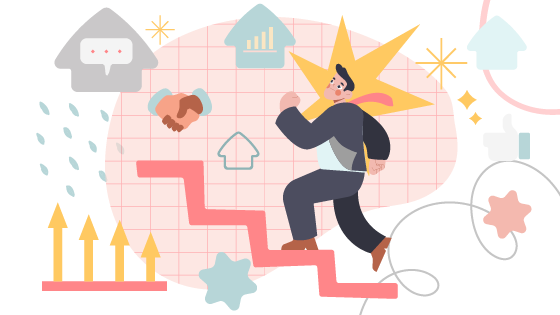By now, you’ve probably heard about language-learning wunderkind, Duolingo. It’s a relatively small, free app that promises to teach users foreign languages, from French to Portuguese; 16 languages in all. With more than 100,000 active users every day, there’s a lot to be learned from the success of what is essentially a bite-sized learning game. How is Duolingo keeping users glued to their lessons? And how can you translate that success into your own microlearning efforts?
As it turns out, Duolingo is doing almost everything right, so it’s worth a deeper look.
P.S. If you want to learn more about microlearning, grab a copy of our free eBook here.
Hyper-Relevant Source Material
Duolingo users know that the first thing the app does (once you’ve selected your desired language, natch) is take you through a quick, fun test of your current skills. This allows the app to assess your current level and then customize your lessons based on your level of experience.
Instead of being frustrated that the lessons are going too slowly or feeling overwhelmed because they’re going way too fast, learners want a customized experience that adapts to their level of knowledge and expertise. Microlearning is perfect for this, making it easier for learners to “choose their own adventure” and choose source material that is relevant to them, their position, and their level of expertise.
Small, Measurable Goals
When you start using Duolingo, you set a daily goal for yourself. Whether you choose to take five minutes of lessons or you’re committed to a longer session, you string together your own lesson plan based on your personal goals. For its part, the app keeps track of how often you log on and complete lessons, awarding badges and tokens for mastery, streaks, and other accomplishments.
Small, measurable goals might seem like no big deal, but to a learner, they’re both engaging and motivational. When your learner knows that she’ll receive a badge for completing one more lessons or gets kudos for signing in every day, it adds a new level of incentive, past that of personal development. When users can choose whether they do a lot or a little, they also feel more autonomous; a good thing for eLearning.
Testing Weak Spots
As you complete Duolingo lessons, you may be asked to go back and redo lessons based on your weak spots. Duolingo tracks each learner’s path, and recognizes through data which areas need a little extra attention. Learners score extra points for retaking quick mini-lessons that are designed to help them brush up on their skills.
Data is an oft-ignored (and sometimes misunderstood) ally when it comes to designing and implementing microlearning. By gathering data surrounding learner performance, chosen topics, and where there may be learning gaps, you’re better able to prescribe mini-modules that help fill those gaps based on each individual’s level of learning. Use what you know about your learners to build microlearning that helps patch some of the weak spots in their knowledge library.
A 2013 study performed by a professor at Queens College, City University of New York found that Duolingo was effective in teaching languages, but it was highly predicated upon learner self-motivation and foundational knowledge. But those who understand the power of microlearning know that it mirrors the same two characteristics. When learners are self-motivated and already have a solid understanding of material, microlearning can be a quick, effective way to brush up, hit home, and teach important concepts in a bite-sized way. Patterning microlearning after the wildly successful Duolingo? It makes for a great place to start.






